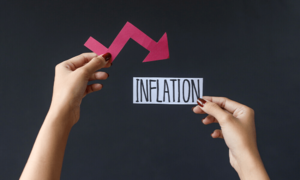After the most expensive hurricane season on record last year, US officials said Thursday to expect a more normal Atlantic season in 2018 with five to nine hurricanes in total. Last year was particularly devastating, with hurricanes Harvey, Irma and Maria wreaking deadly havoc throughout the Caribbean and Atlantic region. They were among 17 storms large enough to merit their own names which tore through the Atlantic basin, including 10 hurricanes.
The 2018 season, which begins June 1, could bring 10 to 16 named storms, including tropical storms and hurricanes, said the National Oceanic and Atmospheric Administration (NOAA). There is a 75 percent chance that the 2018 Atlantic hurricane season will be "near-or above-normal," the agency said. Just one to four of this season's most powerful storms are expected to become "major hurricanes," meaning Category Three or higher with wind speeds of at least 111 miles per hour (178 kilometers per hour).
"We are not expecting this season to be one of the most active on record," Gerry Bell, lead hurricane season forecaster with NOAA's Climate Prediction Center, said at a press conference in Lakeland, Florida. But that should not be a cause for complacency, he said.
"We are expecting a near average season, which means a lot of storms swarming in the Atlantic," he added. "This is the time to start getting prepared." Fewer storms are expected this year partly because of "the possibility of a weak El Nino developing," which could reduce the number of storms later in the season, NOAA said.
Also, "near-average sea-surface temperatures across the tropical Atlantic Ocean and Caribbean Sea" have an effect on the number of hurricanes. Earlier this week, NOAA made a similar prediction for the Central Pacific region, predicting a normal to above-normal season with as a whole, three to six tropical cyclones.
Get ready Harvey, which drenched Texas, cost $125 billion and was the second-most expensive hurricane in US history, after 2005's Katrina which cost $161 billion. Tallied together, 16 major weather disasters in the United States, including hurricanes, cost the US $306.2 billion in 2017, shattering the previous cost record of $214.8 billion in 2005, said NOAA.
Hurricanes Irma and Maria also spread a wide path of destruction last year. Irma reached Category 5 and was the strongest storm on record in the open Atlantic. It devastated the islands of Barbuda, Saint Martin and Saint Barthelemy, and pummeled the Florida Keys. Maria, which made landfall in Puerto Rico as a Category 4 storm in September, is blamed for causing the island's worst natural disaster in modern memory. Eight months later, power has yet to be fully restored in the US island territory, and the death toll remains unclear.
NOAA will update its predictions in August, just before the peak of the Atlantic hurricane season which runs from June 1 to November 30.
The NOAA predictions relate to how many storms are expected to form, but do not make any forecasts about landfall. Ways to prepare include stocking up on a few days' worth of food and water, and making a plan in case an evacuation is ordered, experts say.
People should also put together a kit that includes medical supplies, flashlights, batteries, cash, important identification documents, and snacks.
BR100
11,866
Decreased By
-213.1 (-1.76%)
BR30
35,697
Decreased By
-905.3 (-2.47%)
KSE100
114,148
Decreased By
-1904.2 (-1.64%)
KSE30
35,952
Decreased By
-625.5 (-1.71%)


























Comments
Comments are closed.